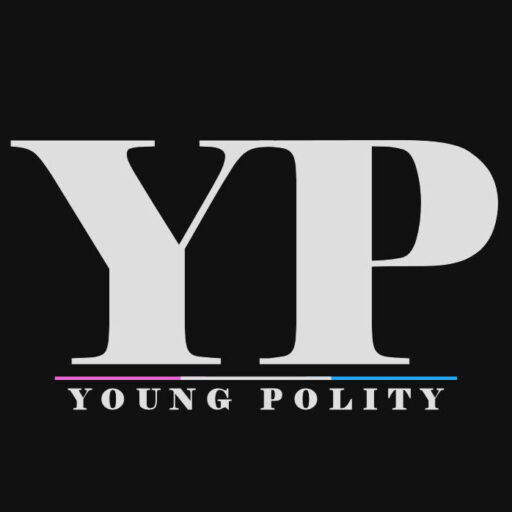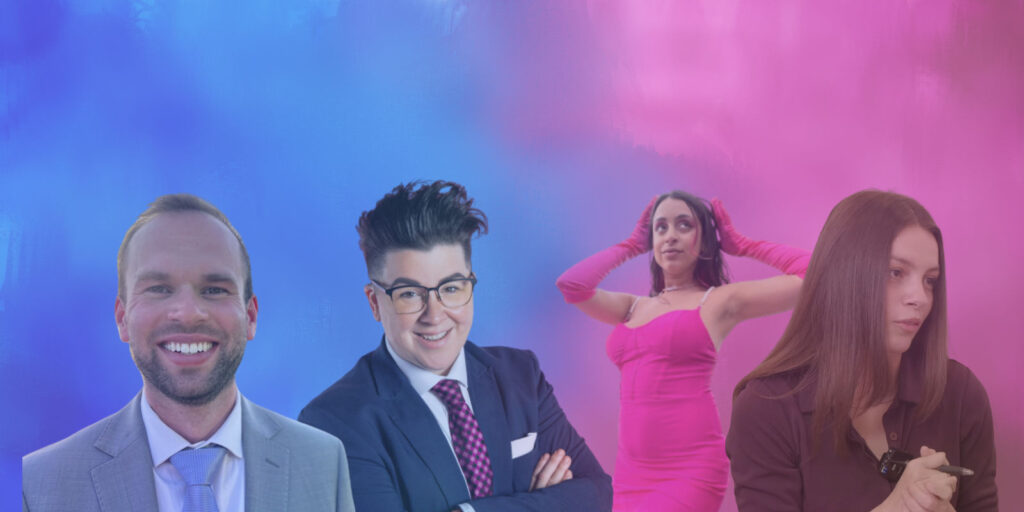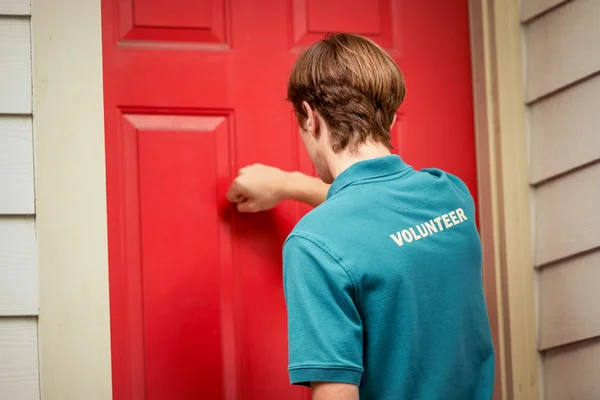The deep cavern between demographics of students is widening. Educators who have been “in the game” a while saw it coming, and new educators are learning how differences in classes are becoming stark and obvious. Not along racial lines, or campus lines, but achievement lines. It comes as no surprise that students who were already content-strong before COVID came through the pandemic the “least scathed.” However, students who already needed support prior to The Great Homebounding have returned to campuses miles behind their peers.
Regional Education Library of the Mid Atlantic conducted a study of Pittsburgh, Pennsylvania student performance pre- and peri- pandemic on factors of performance and attendance.
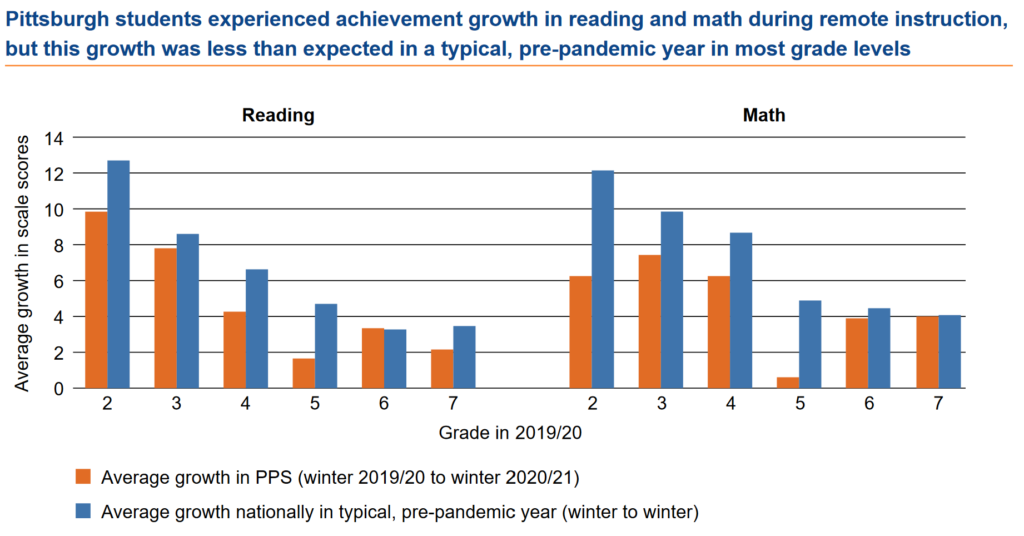
The only grade level that performed better than expected were sixth-graders, moving from elementary to secondary expectations without previously being accustomed to periodic movement. Sixth and seventh graders on mathematics were the only other groups performing comparably to pre-pandemic expectations. In all other studied groups, the disparity is staggering. And now, 2020’s middle schoolers are in high school.
The Social Network
The idea that the puberty-maturity age zone is the most difficult time, socially, is well-established. But previously, generations went through this difficult social time in very social ways, face-to-face with peers. The impulse to gravitate in like-minded groups, identifying with things greater than oneself; these experiences were largely offline, even in the early internet days. While some components of online social interaction were revolutionary in their time, they are incomparable to the modern internetscape.
Elder Gen Z, young Millennials, and the “Zillennials” relate on the experience of singular ultra-viral moments, particularly videos depicting intense tragedy with which we had no methods for coping. The internet provided us profound access to human suffering and dilemma never before known so widely. The most adequate comparison, historically, may be that of World War II, famously summarized by Churchill as a period where never before “in the field of human conflict was so much owed by so many to so few.” Everyone was touched by the war. Everyone knew someone, everyone lost someone, many lost lots of someones. We had to create whole new laws for grappling with the intense inequity of that loss.
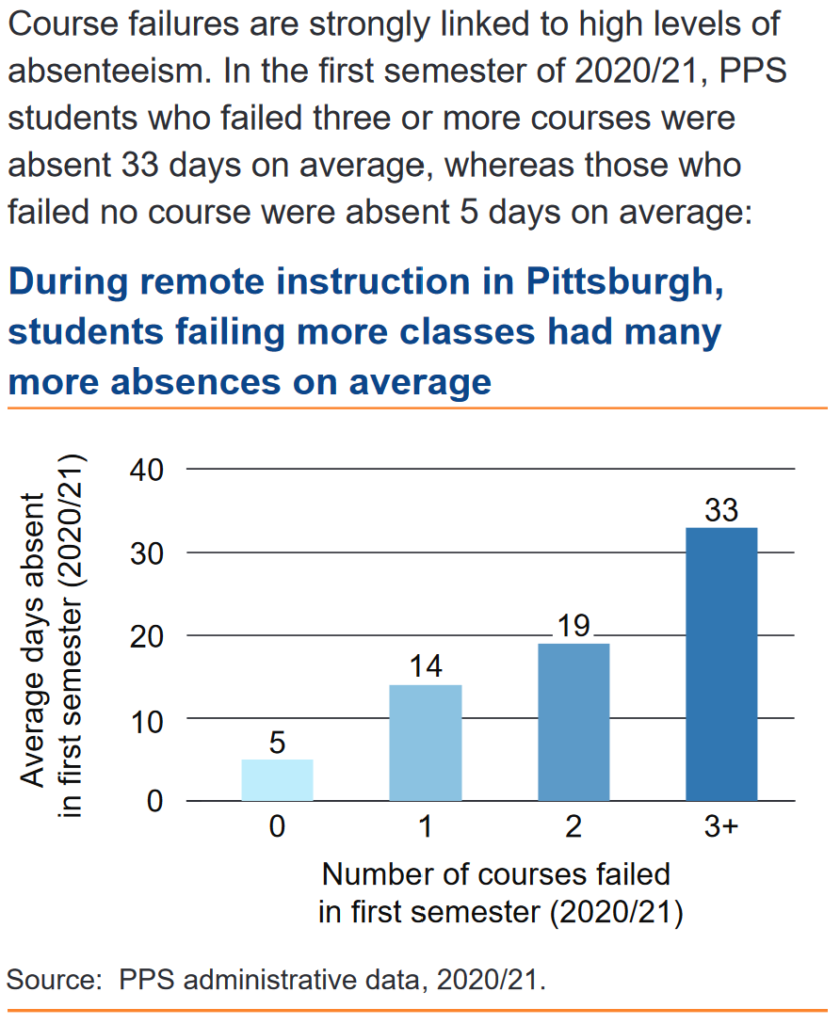
The New Schoolers
But not everyone was on the battlefront. Not every demographic was experiencing the same impact of the war. Some of the factors were geographical, or racial, or gender-biased. The internet reduced or eliminated those factors for its young user population in the time before advanced personalization algorithms. Kids could watch a YouTube clip of a journalist tortured and murdered overseas at 8am, then go to class at 9. And as messed up as that is, it was probably the only clip they’d see, at least for a while.
Nowadays, young Gen Z and elder Gen Alpha students can see dozens of similar reels, one after another, via tailored algorithm. It’s easy to be sucked into a “side of TikTok” where content is in the vein of true horror. Constant bombardment of information like that changes global perspective and societal outlook. Today’s youngest netizens are desensitized to terror such that they do not fear consequences of “acting out” at school. Detention? That’s nothing compared to the ongoing gun violence issue we have here in the United States. A late grade, a bad GPA, exclusion from a pep rally? That’s fine, the planet’s dying anyway. What’s a diploma worth when post-graduates struggle to find work, let alone work good enough to pay off their loans? College just sounds like a bad idea all around.
I’ve been told, flat out, by freshman that they’re not concerned with passing because “school’s not real” and “even if I tried, you’d fail me anyway.”
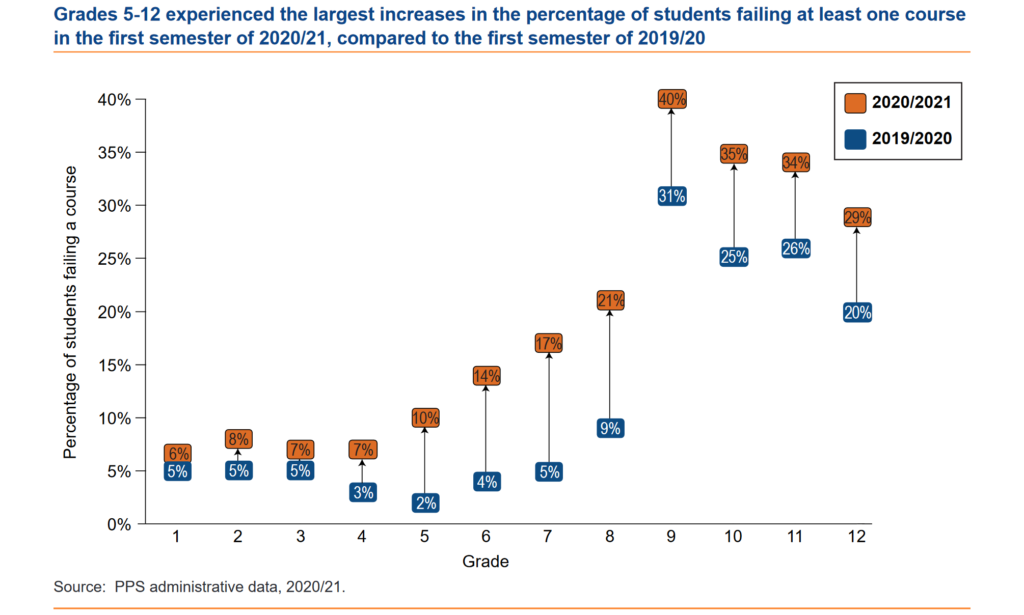
Considering all the factors
Other than COVID, what can we blame for these statistical anomalies? Even though a larger percentage of teachers nationwide held advanced degrees, there was no change in the percentage of teachers who held teaching certifications. While more highly educated adults are joining school staffs, they are not advancing their knowledge of classroom management techniques and lesson facilitation skills. 10% of teachers overall held lesser or no certification in teaching practices in 2020-2021.
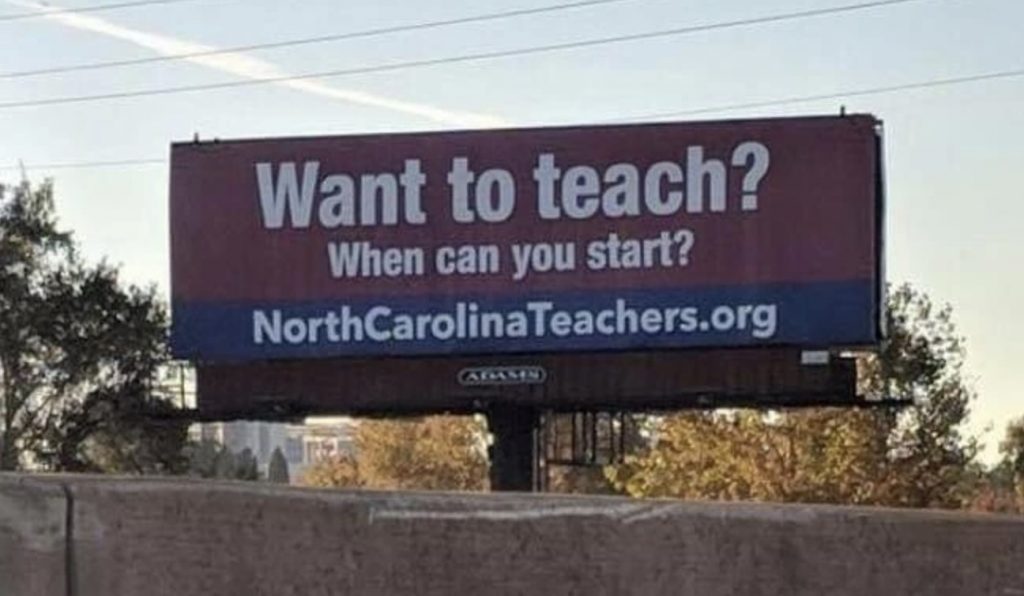
That percentage is higher in some areas with more desperation for staffing. From Texas’ 2020/21 to 2021/22 schoolyear, the rate of new teachers without a certificate increased from 11.42% to 19.63% (change of 8.21%.) In the ten years before 2020/21, the change had only been 5.37% (2010/11, 6.05%.) Some teachers don’t hold any degree at all. Maybe that wouldn’t be so bad, if they had other experience in education and childcare. But in Florida, the required background is military service.
More frequently, students are coming to school and being taught by educated adults who don’t know how to educate others. They may have little or no experience in group childcare settings at all, and only baseline understand of prescribed practices offered by their administration in pre-term Professional Development. Their knowledge becomes trapped behind communication barriers, academic or linguistic.
What Divides Us
From 2010 to 2020, the rate of English Learners enrolled in US public schools increased from 9.2 to 10.3% of students overall. In Texas, the rate of English Learners enrolled in public schools is more than 1 in 5.
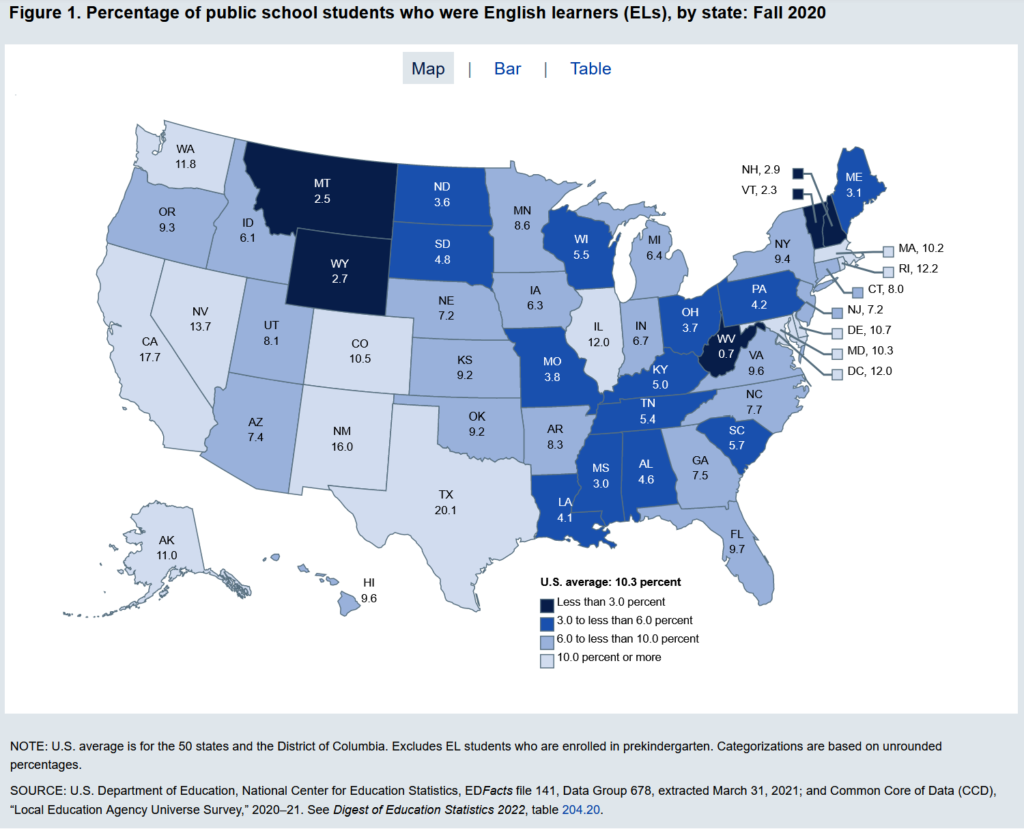
This falls back on students as an increasing feeling that their teachers don’t know enough, or don’t care enough, to properly provide a learning experience. A sense of nihilism is easy to settle into when your instructor doesn’t seem to have a unified grading system, or consistent expectations for the class. Elements of professionalism that exist in the (thankfully growing) number of teachers with several years of experience are absent in the (also growing) population of new teachers who may be on-track to obtain an education certificate… if they don’t burn out first.
Attrition rates are on the rise, with 2021/22 being the year that turnover significantly increased from pre-pandemic levels. Studies show that new teachers are less likely to be retained than teachers with moderate experience, and teachers with vast experience are now least likely to be retained, inviting inexperienced replacements.
So what about the kids?
Students’ mistrust of their teachers becomes disrespect and combativeness. There are no meaningful consequences for foul language, destructiveness, or absence when a student’s idea of punishment is violence. Additionally, public schools have a hard enough time fighting the rise of “choices” that can bleed district budget. Academic decline instills further mistrust of schools themselves in the parents of students who are struggling. A vicious cycle, a log roll to a cliff of… what? Massive enrollment re-distribution? Shocking dropout/withdrawal rates? Rocketing numbers of parents opting to homeschool, even if they are also unqualified? Where does that leave Gen Alpha?
It leaves them angry. Justifiably, so. The mental health crisis we’ve known will seem like nothing, compared to the coming wave of “students” whose entire education took place in their own living rooms, devoid of regular peer interaction. Identifying with their place on the web, rather than in a student body. This will bring us back to the demographic lines that gauged war impact. Socioeconomics, gender, race. Families that can’t afford private schools — but don’t trust public schools — only have homeschooling to turn to. And if private schooling was already unaffordable, having an adult unemployed to be the home teacher will exacerbate that. Or worse, there is no home teacher, which is possible in states like Texas where home-based students are not evaluated at all.
The Signs and Symptoms
This trend of education disparity is so evident on campuses, that a less committed teacher than I would assume the only students left “worth trying to teach” are the already high-achievers. In this reality, staffing shortages leave teachers with the option to provide everyone with an equally slow or unsubstantial learning path, or the choice to offer some students a properly paced learning path that leaves other behind.
And that’s not new, that’s how the phrase “Cs get Degrees” was born. Grades depicting comprehension of less than three quarters of material are considered “passing,” but that quarter of missed information doesn’t spawn before the next batch of new information is delivered. Student attitudes toward learning new information vary significantly from “On-Level” to “Advanced” course groups, and it corresponds to what is known as Institutional Trust.
The Education Recovery Scorecard outlines how the areas least impacted by comprehension declination are also the areas with high rates of voter turnout and census response, or areas where most adults trust and support public institutions. “Schools do not naturally bounce back,” report the Harvard researchers behind the study. Test scores declined more in areas with more COVID deaths, and Republicans showed less Institutional Trust with 42% reporting they would not consider taking a vaccine. Likewise, Republican voters accounted for 15% more COVID deaths than Democrats. Of reasons to not consider taking a vaccine, 12.5% outright stated they don’t trust the government.
“Residents in communities where individuals actively participate in civic activities (e.g.,
voting and responding to the census), and express confidence that institutions, including public schools,
act in a beneficial manner may have been more willing to cooperate with their local schools and reduce
disruptions to student learning.” Source
Canyon of Understanding
Test scores have proven correlation to later life outcome. For the thirty years prior to COVID, mean 8th grade math scores increased by two Standard Deviations (units of growth.) From 2019 to 2022, 40% of that mean growth was lost. One Standard Deviation of growth is related to an 8% increase in income as an adult, lower rates of teen parenthood, and fewer legal issues. The pandemic decline is expected to result in a sum $900 billion in loss of income for the generation of K12 students enrolled in public schools in 2020/21.
Stacking years of poor performance one after another in combination with “passing up” to more challenging materials by the skin of their teeth, students are set up to fail as adults right alongside their unsupported teachers. Then, consequently, teachers without established practices and supports provide curriculum that is more passable, but inadequate. Those teachers then continue “passing up” unprepared students to the next round of materials that will either leave them in the dust or be modified down to them. Students losing Institutional Trust in their schools will become adults without Institutional Trust in their government, turning to social communities sharing their lack of education. Ideological differences between adults of varying education levels are widening.
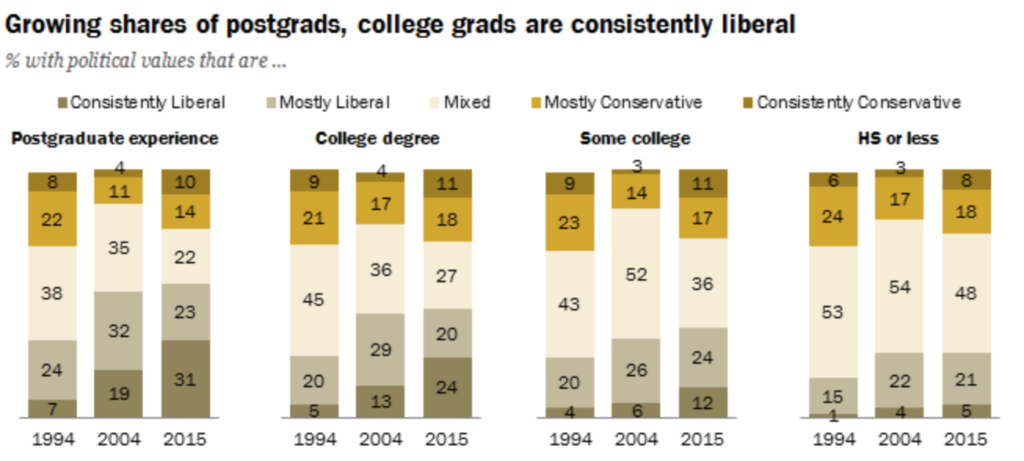
The percent of college-educated adults identifying with conservative ideals has decreased overall, while the percent of conservative adults who only, or did not, complete high school increases. Given our understanding that Republicans accounted for more COVID deaths, that areas with more COVID deaths saw more academic decline, and that low academic achievement is related to more conservative ideals, communities with low census participation should be on the look out for dwindling populations that won’t even need public school funding soon enough.

